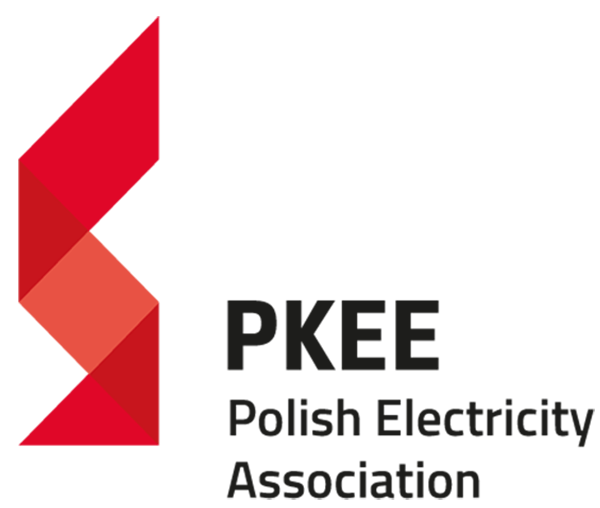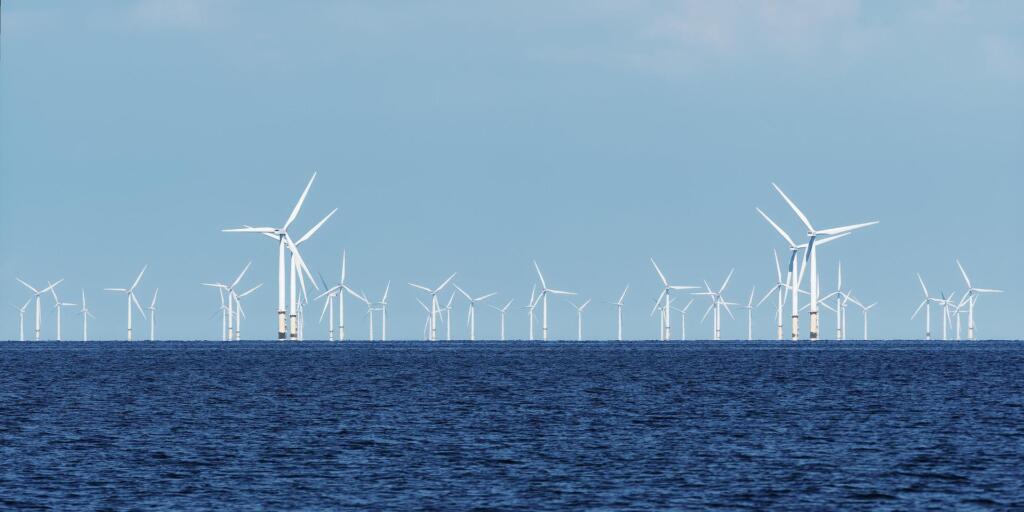On 30 March 2023, the EU institutions reached and announced an initial agreement on the Directive amending the Directive on the promotion of the use of energy from renewable sources[1] (the so-called 'RED revision', or 'REDIII Directive', or 'Renewable Energy Directive'), part of the 'Fit for 55' legislative package published by the European Commission on 14 July 2021. In addition to the original scope of the revision, the initial agreement on REDIII also covers the areas identified in the REPowerEU communication[2] (in particular with regard to the acceleration of administrative procedures for RES installations). Thus, the phase of tripartite talks (so-called trilogues) between the European Commission, the European Parliament and the EU Council on the revision of the RED Directive has ended.
The development of the use of energy from renewable sources is one of the key aspects of Poland's energy transition, supporting both the implementation of the European Union's climate objectives and the improvement of energy security (inter alia, by increasing the degree of diversification of energy generation sources). However, the implementation of an increasingly ambitious climate policy poses many new challenges for the energy sector.
There is still at least a few weeks to wait for the formal adoption and approval of the agreements concluding the REDIII trilogues before the final content is published in the EU Official Journal. Nevertheless, The European Parliament and the Council have already published official press releases[3], containing information on the key elements of the preliminary agreement to be included in REDIII soon.
- RES Objective
The most important finding is the setting of a binding RES target in gross final energy consumption for 2030 at the European Union level of 42.5% and additional indicative targets for Member States to achieve a RES target of 45% in 2030. The existing provisions of the Directive on the Promotion of the Use of Energy from Renewable Sources (in the shape of RED II), in force since December 2018, set an EU target of 32% for the share of energy from RES in the Union's total gross final energy consumption by 2030.
The members of the Polish Electricity Committee (PKEE) welcome the efforts to find an optimal and feasible way to achieve the ambitious EU climate policy. We believe that in order to achieve the newly adopted targets (which means another significant step towards accelerating the decarbonisation of the power generation sector) and at the same time ensure a fair energy transition, a new comprehensive and stable regulatory framework should be adopted. At the same time, we note that the new rules must not give rise to the risk of a potential failure to ensure security of supply of electricity and heat. Already at the current technological stage, the challenges of operating renewable energy sources, mainly concerning the balancing of RES energy in the electricity system, are discernible.
The financial stability of the sector is a key element to enable the development of RES. Strategic and long-term development of the use of renewable energy sources requires the provision of a stable regulatory environment and adequate sources of investment funding for entrepreneurs operating in the energy market. An additional challenge is the necessary financial investment in the further development of distribution and transmission networks, which is crucial for the connectivity of new RES capacity.
PKEE members are implementing numerous renewable energy development projects and have ambitious plans in their strategies for the coming years. However, it should be pointed out that RES projects tend to be highly capital-intensive (especially in the case of developing large-scale sources such as offshore wind power) and, in the case of large installations, also require a correspondingly long time for project preparation and construction. Investment gap between the sector's investment capacity and its needs for transformation and climate policy goals should be covered using the financial resources available from EU and national funds. Without adequate financial support, energy companies in Poland will not be able to make all the zero- and low-carbon investments necessary to make RES targets a reality by 2030 and then 2050.
- Sectoral objectives
Achieving climate neutrality will not be possible without mature generation technologies, such as nuclear power or, in terms of RES: photovoltaics and wind power, as well as innovation and the use of a number of emerging technologies (e.g. energy storage, low-carbon transport, alternative fuels, the use of decarbonised gases or the promotion of solutions for cable pooling). The interconnectedness of many subsectors and the interdependencies between electricity, district heating and transport have a significant impact on the rate of change.
Transport
As a result of the REDIII negotiations, Member States will be able to choose either a 14.5% reduction target for greenhouse gas intensity in transport using RES or a 29% target for the share of RES in final energy consumption in transport in 2030. A binding sub-target was also negotiated: 5.5 % shares of advanced biofuels in the share of renewable energy supplied to the transport sector. As part of this target, an 1% requirement for non-biological renewable fuels (mainly green hydrogen and hydrogen-based synthetic fuels) was introduced.
Future action in the area of supporting sector electrification is expected to result in the widespread use of renewable and low-carbon fuels in transport. The use of RES electricity in road transport and renewable or low-carbon fuels in aviation, maritime and heavy transport can play a particular role in this respect.
Industry
In the industrial sector, RES use is expected to grow by 1.6% per year by 2030. In addition, by 2030 42% of the hydrogen used in industry is to come from non-biological renewable fuels. By 2035, this is expected to be a 60% share.
Construction
The compromise on REDIII also assumes An indicative target of at least 49% of renewable energy in buildings at EU level. This will be achieved, for example, through efficient district heating systems, the full contribution of which should be included in the pending revision of the EPBD.
Heating and cooling
The revision of the RED Directive has also Introduce a gradual increase in the use of RES for heating and cooling, with a binding increase of 0.8% per year at national level by 2026 and 1.1% from 2026 to 2030. In addition, Country-specific indicative targets will be introduced. The target for increasing the share of RES in networked heat and cooling generation is set at an indicative level of 2.2% per year on average over the period 2021-2030.
The PKEE has already indicated on a number of occasions that increasing the use of RES in district heating in the Polish circumstances is extremely difficult, particularly in conjunction with the restrictions on biomass and the new, stricter requirements related to the definition of an 'efficient heating and cooling system', the negotiation of which under the Energy Efficiency Directive ('EED') trilogues[4] completed in early March 2023.
Energy companies affiliated with PKEE (PGE, Tauron, Enea, Energa) are carrying out a number of investments related to increasing the share of RES in the district heating sector, with the key challenge in the perspective of the current decade being the withdrawal of coal fuels from the fuel structure used in district heating in Poland. In light of the above, the best technology currently available is highly efficient cogeneration sources using either natural gas or biomass. It is worth pointing out that in the future, in order to reduce greenhouse gas emissions, high-efficiency gas-fired cogeneration units will be ready to be upgraded to burn admixtures of hydrogen or biomethane, or only hydrogen for zero-emission generation (assuming the development and availability of appropriate technologies), as reflected, for example, in the EU's Sustainable Financing Framework and, in particular, its taxonomy.
What distinguishes the Polish district heating sector from systems in other EU countries is that the possibilities of using renewable energy sources in large district heating systems (found in the largest Polish agglomerations) are significantly limited. The distribution of heat from low-temperature RES sources is particularly difficult and is due to the incompatibility of the infrastructure of district heating systems in Poland and the required water temperatures in the district heating network. On the other hand, a key factor leading to lower temperatures in district heating systems is the thermo-modernisation of buildings and their internal installations.
Taking into account the conditions described above, district heating systems in Poland require new solutions which, on the one hand, will influence the reduction of greenhouse gas emissions and, on the other hand, will ensure a guarantee of uninterrupted heat supply to consumers. Therefore, the members of PKEE welcome the fact that the revision of the RED Directive is to include provisions allowing electricity from renewable sources to be counted towards RES targets in the heating sector. This will be a fundamental change in the regulatory environment that will allow, among other things, the development of large-scale heat pumps but also electrode boilers in the coming years. Experience from the operation of such new sources shows significant advantages for the heat supply of systems, particularly as peak sources.
According to the PKEE, increasing the share of RES in the heating and cooling sector in Poland will be a major investment challenge. The targets adopted are undoubtedly ambitious, but thanks to the new solutions agreed in the RED Directive related to the electrification of district heating, the direction of change in the sector is being set, correlated also to the increase in the share of energy from RES in the national electricity mix.
- Biomass
As a result of the agreement, sustainability criteria for biomass, in particular forest biomass, are to be tightened. The principle of cascading biomass use will be introduced. The PKEE has repeatedly pointed out that imposing further restrictions on biomass use could significantly hinder the achievement of ambitious new targets, and that the current framework ensures that forest biomass fuels are sourced sustainably.
In PKEE's view, the agreed solutions for biomass criteria will be a factor that may further hinder the process of district heating transformation in Poland.
- Issuing of permits
In order to accelerate the development of RES use, REDIII is to introduce a fast-track permitting procedure. Member States will indicate the RES acceleration areas where a simplified and accelerated permitting procedure will be possible (12 months for the areas indicated by the Member State, 24 months for the others).
In the opinion of the PKEE, measures aimed at streamlining the implementation of investment processes in the RES area may be beneficial, while maintaining the rationality of the deadlines set for individual stages of the investment process, and the removal of administrative burdens should improve the conduct of the energy transition. However, it should be remembered that speeding up the procedures for issuing permits (including connection conditions) may be a challenge for distribution network operators (DSOs).
The above information is based on official communications from the European Parliament and the Council, published after an initial agreement was reached on 30 March 2023, concluding the trilogues on the RED revision as part of the work on the 'Fit for 55' Package. In the next step This preliminary political agreement will have to be approved by COREPER in the Council of the EU and by the European Parliament. So far, 31 December 2024 has been indicated as a possible transposition date.
[1] OJ L 328, 21.12.2018, pp. 82-209
[2] COM/2022/230 final
[3] European Parliament Communication: https://www.europarl.europa.eu/news/en/press-room/20230327IPR78523/renewable-energy-meps-strike-deal-with-council-to-boost-use-of-green-energy; Council communication: https://www.consilium.europa.eu/en/press/press-releases/2023/03/30/council-and-parliament-reach-deal-on-renewable-energy-directive/
[4] A preliminary inter-institutional agreement was reached on 10.03.2023 to amend the content of the aforementioned Energy Efficiency Directive (EED).

